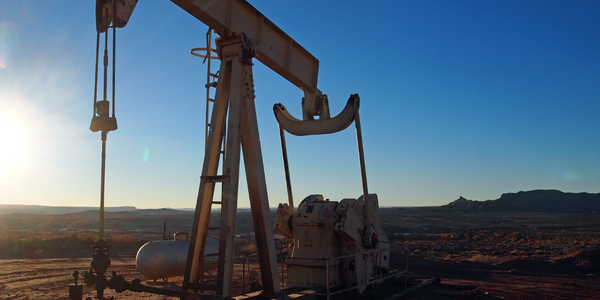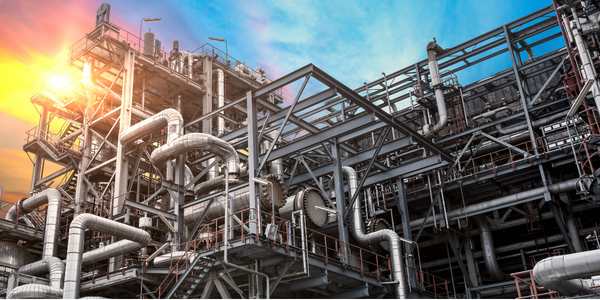
Technology Category
- Infrastructure as a Service (IaaS) - Private Cloud
- Infrastructure as a Service (IaaS) - Public Cloud
Applicable Industries
- Oil & Gas
- Transportation
Applicable Functions
- Logistics & Transportation
- Maintenance
Use Cases
- Construction Management
- Infrastructure Inspection
Services
- Cloud Planning, Design & Implementation Services
- System Integration
The Customer
Total SA
About The Customer
Total S.A. is a French multinational company and one of the largest energy producers in the world. Its businesses cover the entire oil and gas supply chain, from crude oil and natural gas exploration and production to power generation, transportation, refining, petroleum product marketing, and international crude oil and product trading. To support all these operations, Total’s IT environment is running a wide variety of applications on premises. The organization also has extensive public cloud and private cloud environments, including Microsoft Azure. In the cyclic energy industry, cloud technology gives Total the flexibility to support services for a limited amount of time, then move on to new projects.
The Challenge
Total S.A., a French multinational energy company, is one of the largest energy producers in the world. Its operations span the entire oil and gas supply chain, from crude oil and natural gas exploration and production to power generation, transportation, refining, petroleum product marketing, and international crude oil and product trading. To support these operations, Total’s IT environment runs a wide variety of applications on premises, as well as extensive public and private cloud environments, including Microsoft Azure. The company needed a consistent platform and management for all of its sites, regardless of size. Some offices contain as few as three people, while others may support up to 1000 employees. The organization needed a strategic solution that would position the organization to respond to any need. The company was also seeking to dramatically minimize the size of its data center footprint as part of its environmental initiatives to reduce greenhouse emissions.
The Solution
Total embarked on a digital transformation journey, focusing initially on modernizing its siloed data center. The company adopted the Nutanix hyperconverged infrastructure (HCI) solution and is now extending its environment across its global sites. The Nutanix HCI solution allows Total to avoid the time and costs associated with managing multiple OEM environments, while providing both flexibility and support for standardization. Total employs a full range of Nutanix solutions across its sites, including all of its North American operations. Over the next three years, the company will continue to ramp up its Nutanix environment to enable additional sites and services, optimizing costs using the solution together with other solutions. Total’s goal is to deploy AHV hypervisor and Nutanix Files to support its environments, reduce hypervisor costs, and simplify administration under a single, unified dashboard. Consolidating multiple siloed resources onto the single hyperconverged environment lets Total minimize its data center size, to consume fewer power and cooling resources and support greener, more energy-efficient operations.
Operational Impact
Quantitative Benefit

Case Study missing?
Start adding your own!
Register with your work email and create a new case study profile for your business.
Related Case Studies.

Case Study
Taking Oil and Gas Exploration to the Next Level
DownUnder GeoSolutions (DUG) wanted to increase computing performance by 5 to 10 times to improve seismic processing. The solution must build on current architecture software investments without sacrificing existing software and scale computing without scaling IT infrastructure costs.

Case Study
Remote Wellhead Monitoring
Each wellhead was equipped with various sensors and meters that needed to be monitored and controlled from a central HMI, often miles away from the assets in the field. Redundant solar and wind generators were installed at each wellhead to support the electrical needs of the pumpstations, temperature meters, cameras, and cellular modules. In addition to asset management and remote control capabilities, data logging for remote surveillance and alarm notifications was a key demand from the customer. Terra Ferma’s solution needed to be power efficient, reliable, and capable of supporting high-bandwidth data-feeds. They needed a multi-link cellular connection to a central server that sustained reliable and redundant monitoring and control of flow meters, temperature sensors, power supply, and event-logging; including video and image files. This open-standard network needed to interface with the existing SCADA and proprietary network management software.

Case Study
Refinery Saves Over $700,000 with Smart Wireless
One of the largest petroleum refineries in the world is equipped to refine various types of crude oil and manufacture various grades of fuel from motor gasoline to Aviation Turbine Fuel. Due to wear and tear, eight hydrogen valves in each refinery were leaking, and each cost $1800 per ton of hydrogen vented. The plant also had leakage on nearly 30 flare control hydrocarbon valves. The refinery wanted a continuous, online monitoring system that could catch leaks early, minimize hydrogen and hydrocarbon production losses, and improve safety for maintenance.

Case Study
Airport SCADA Systems Improve Service Levels
Modern airports are one of the busiest environments on Earth and rely on process automation equipment to ensure service operators achieve their KPIs. Increasingly airport SCADA systems are being used to control all aspects of the operation and associated facilities. This is because unplanned system downtime can cost dearly, both in terms of reduced revenues and the associated loss of customer satisfaction due to inevitable travel inconvenience and disruption.





